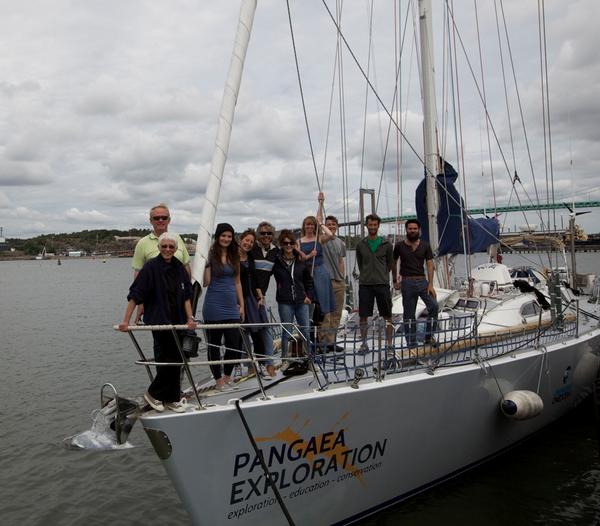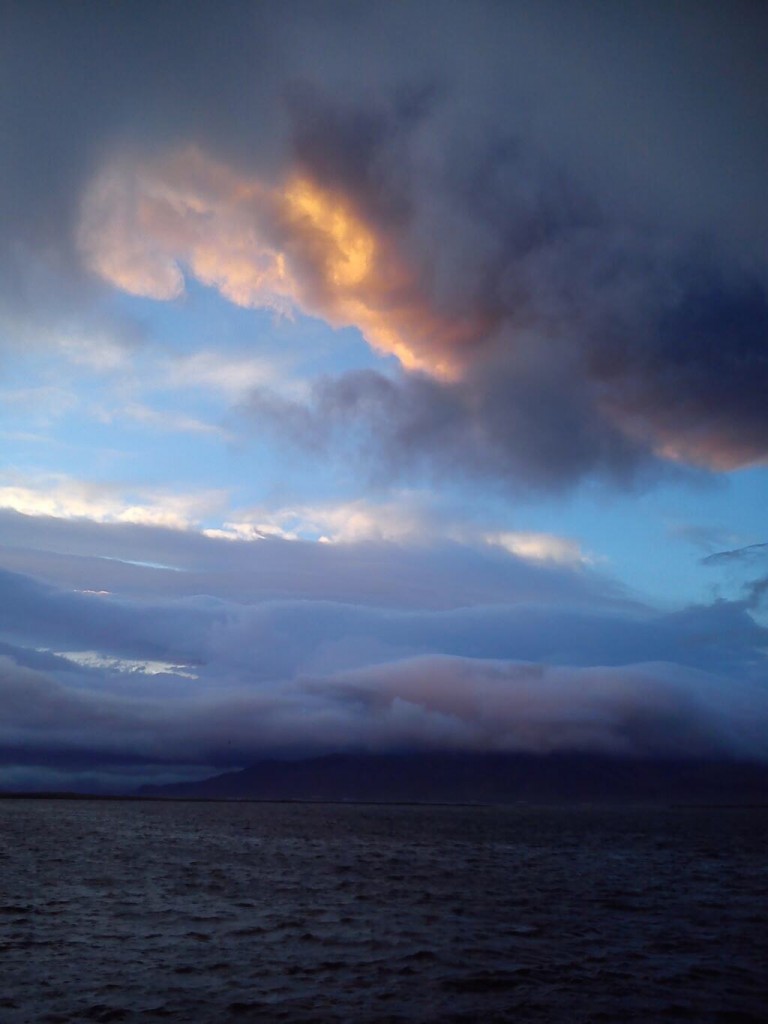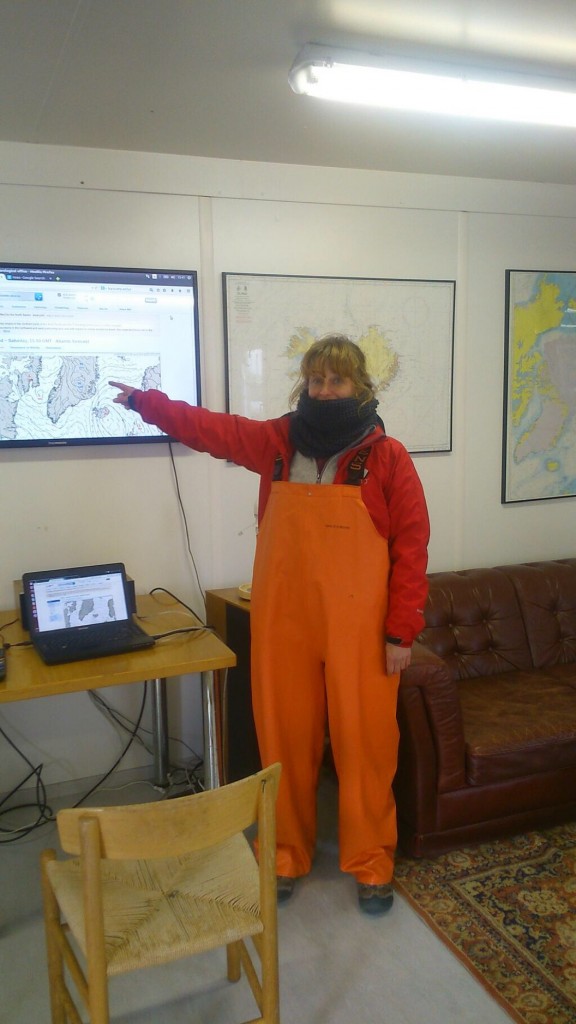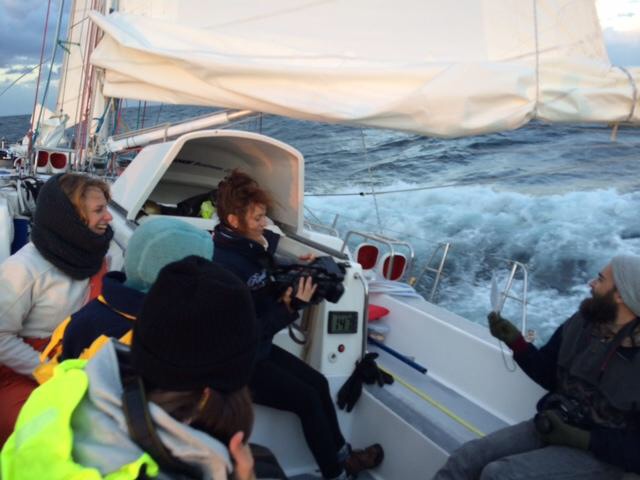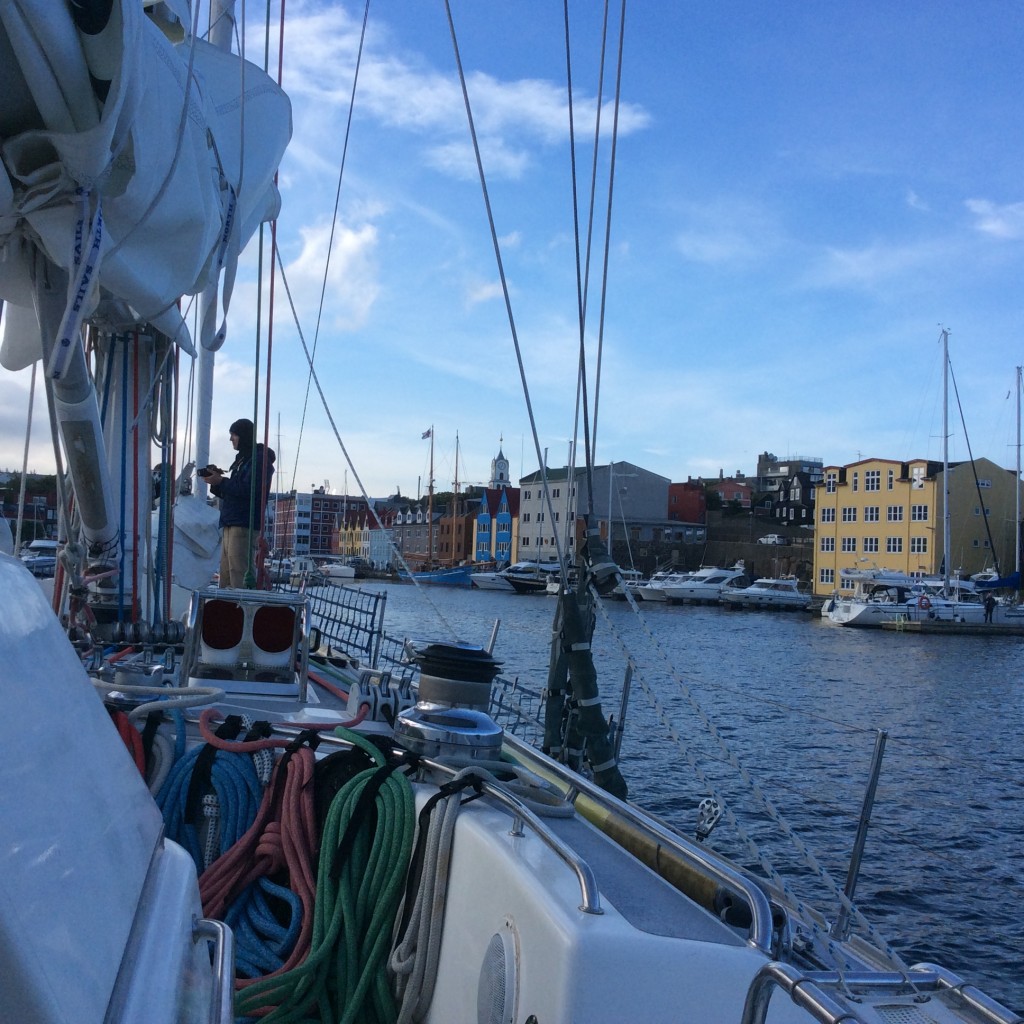At the beginning of 2014, the director of ONCA gallery, Laura Coleman, asked me if I wanted to take part in an expedition with a group of artists and oceanographers across the North Atlantic, mapping whales and using the journey as inspiration for a piece of artwork. I returned from the 1300 miles between Iceland and Sweden on Seadragon, our boat of sail and steel, at the end of July. Having survived the ragged edges of a hurricane, 3 metre high waves, wildly broken sleep and cramped conditions, I have come home with tales to tell and a need to draw.
It was the kind of trip that will stay in my dreams for the rest of my life. A watch every 6 hours meant rising in the middle of the white Northern night and sleeping when I was done. The sun seemed to swing around the sky, never quite dipping fully out of sight. My body was the only reference I had; ignoring clocktime and eating and sleeping when it ached. The first darkness I saw was two days before trip end. I remember standing on deck, the boat almost flying over the waves, fascinated by a single star and a huge full moon scudded with clouds ahead of us. It was the kind of moon to make your hair stand on end.
The first whales we saw were a pod of pilot whales, maybe about 30 of them, speeding alongside the boat, dipping and diving blackly through the pale grey water. They stayed with us for a few miles before we outsailed them, whistling to eachother in the distance. Several times during the trip, I thought I heard whales singing softly through the keel of the boat as I lay in my hammock but I must have imagined it. We saw ominously few whales or dolphins at all.
My overall experience was one of the timelessness of being at sea, that sailing across oceans – looking for whales to hunt or to study – hasn’t changed in centuries. The same stories are told of storms and drownings, of smuggling rum or drugs or guns, of ghost ships and pirates and the rocks where mermaids or skinny-dipping Swedish girls swim. Sailors are still whistling for the weather, watching the storm petrels walk on water and trusting the spirit-white gulls to lead them home.
I made drawings and took notes throughout the journey. I don’t know what the finished work will look like yet and now that I’m back on land, my memories still seem to be wave-crashing around in my head. Eventually they’ll wash up and dry out into something more tangible, I hope. Maybe I’ll make a map of my journey, maybe create drawings or maybe both. The intention is that the work will be completed for 2015, in time for Whalefest.
For the meantime, I’m content with the knowledge that part of me has been left at sea and whenever I lie down to sleep I will still feel the boat rocking under me.
NB: The expedition on Seadragon was organised by Pangaea Exploration, encouraging conservation, education and exploration across the seas.

